Artists whose art changed the world: a glimpse into history through the eyes of geniuses
- 1. Leonardo da Vinci
- 2. Michelangelo
- 3. Rembrandt
- 4. Vermeer
- 5. Jean-Antoine Watteau
- 6. Eugene Delacroix
- 7. Claude Monet
- 8. Georges Seurat
- 9. Vincent van Gogh
- 10. Edvard Munch
- 11. Egon Schiele
- 12. Gustav Klimt
- 13. Pablo Picasso
- 14. Henri Matisse
- 15. Rene Magritte
- 16. Salvador Dalí
- 17. Georgia O’Keeffe
- 18. Edward Hopper
- 19. Frida Kahlo
- 20. Jackson Pollock
- 21. Andy Warhol
- 22. Yayoi Kusama
- 23. Francisco Goya
- 24. Caspar David Friedrich
- 25. Jan van Eyck
The art world has been shaped by a myriad of legendary artists, each leaving an indelible mark on the canvas of history. Deciphering the true greats in art can be subjective, as the beauty of art often resides in the eye of its beholder. Yet, certain artists have unequivocally made a lasting impression on the art community with their unparalleled achievements and masterpieces that withstand the sands of time.
New York's prominent museums such as The Met, MoMA, and the Guggenheim house numerous masterpieces by these illustrious artists. Observing the art of Da Vinci, Degas, Warhol, Pollak, or Kusama in person can be a transformative experience. For those inspired by these art legends, New York's galleries offer a glimpse into the budding stars of tomorrow, and even art classes might unearth a latent artist in you.

1. Leonardo da Vinci
Leonardo da Vinci, often considered the quintessential Renaissance figure, is synonymous with genius. He was famous not only for iconic works such as the Mona Lisa, The Last Supper, and Lady with Ermine, but also for his visionary drawings that depicted technologies such as airplanes, tanks, and automobiles centuries before they were actually invented.
Leonardo was born in Ancona, Italy, in 1452, and showed his artistic talent from an early age. He studied in the workshop of Andrea del Verrocchio, where the young artist developed his skills in drawing, sculpture, and anatomy. His work was inspired by nature and science, making his work unique for its time.
Leonardo was not only an artist, but also a polymath scientist. He studied the anatomy of the human body and made detailed anatomical sketches that were later great contributions to medicine. He also dabbled in engineering and invented many devices that foreshadowed future technological advances.
Leonardo's life was full of travel and adventure. He worked in various Italian cities as well as in France, where he became a portrait painter under King Francis I. His scientific writings and creative legacy continue to inspire artists and scientists around the world, and Leonardo da Vinci remains one of the most influential figures in the history of art and science.
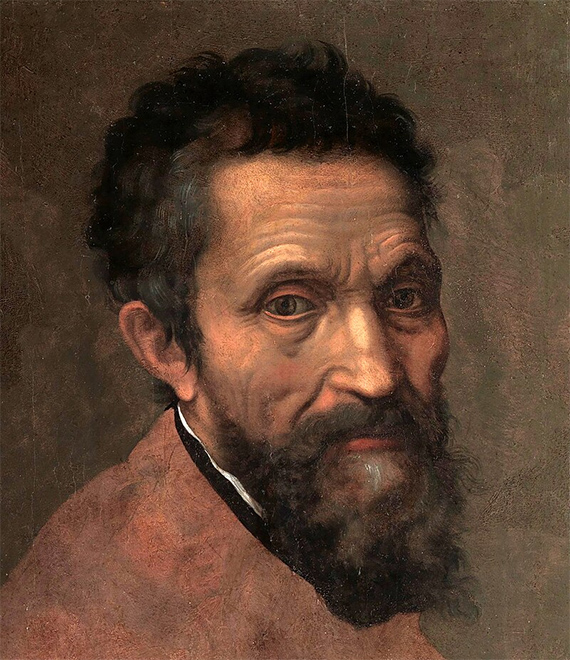
2. Michelangelo
Michelangelo was a versatile artist: painter, sculptor, architect and poet. Known for his Sistine Ceiling, David, Pieta, and St. Peter's Basilica, he worked in various cities in Italy, but primarily for the Medici popes in Rome. Among his significant works are the tomb of Pope Julian II depicting Moses and the design of the Laurentian Library. Two decades after the Sistine Ceiling, he created another masterpiece, the Last Judgment in the same chapel.
Michelangelo Buonarroti was born in 1475 in Caprese, near Florence, and showed a talent for art from childhood. His father was a poor nobleman, and young Michelangelo was sent to apprentice to the painter Domenico Ghirlandaio. This was the starting point for his great artistic career.
However, Michelangelo was not only a talented painter, but also a consummate sculptor. His sculptural works such as the David and the Pieta are considered absolute masterpieces of art. He strove for perfection in each of his works, even turning down commissions if he felt he could not create a worthy piece.
Michelangelo was also known for his poems and poetry, where he expressed his thoughts on life, art and spirituality. His contribution to Renaissance art remains invaluable, and his work still inspires artists and art lovers from all over the world. His life and legacy continue to live on in the history of art as one of the most remarkable achievements of human culture.

3. Rembrandt
The renowned Dutch master Rembrandt is known for iconic works such as The Night Watch and The Demonstration of the Anatomy of Dr. Nicolas Tulp. He was especially recognized for his portraits that conveyed the deep emotions and thoughts of his subjects, particularly through facial expressions and the play of light on their features.
Rembrandt Harmenszoon van Rijn was born in Leiden, Holland, in 1606. His parents were simple townspeople, and Rembrandt began his artistic career by entering the studio of Jan Lievens. From an early age he showed his artistic talent and quickly attracted attention with his works.
The peculiarity of Rembrandt's work was his ability to convey the deep emotions and mental state of his models. He carefully studied light and shadow, which gave his portraits a special expressiveness. His plays of light and shade and his play with color made his work unsurpassed in the history of painting.
In addition to portraits, Rembrandt also produced many other paintings, including biblical subjects, landscapes, and still lifes. His contribution to art remains great and inspired artists to explore the world of light and shadow. Despite financial hardships in his life, Rembrandt left us a legacy that continues to delight and inspire art lovers around the world.

4. Vermeer
For two centuries Vermeer went unnoticed, but in the 19th century he was once again recognized as a major figure in art history, celebrated for his incredibly beautiful creations. Some speculate that he used a pinhole camera, as his work displays a soft blurriness that hints at photorealism. However, his most striking talent was his depiction of light as a tangible entity.
Jan Vermeer, born in 1632 in Delft, Netherlands, was a painter of genius whose paintings caught the attention of art historians and art connoisseurs in the late 19th century. His paintings exude exquisite harmony and tranquility, and they contain the ineffable magic of light. Vermeer was renowned for his unrivaled skills in creating detail and his mastery of conveying human emotion.
He worked slowly and meticulously, creating only about 35 known paintings, but each one was a work of art in the highest degree. Some of his most famous works include Girl with Pearls and View of Delft. His ability to capture a moment of great beauty and deep psychological depth has made his work an invaluable legacy for art and art history.
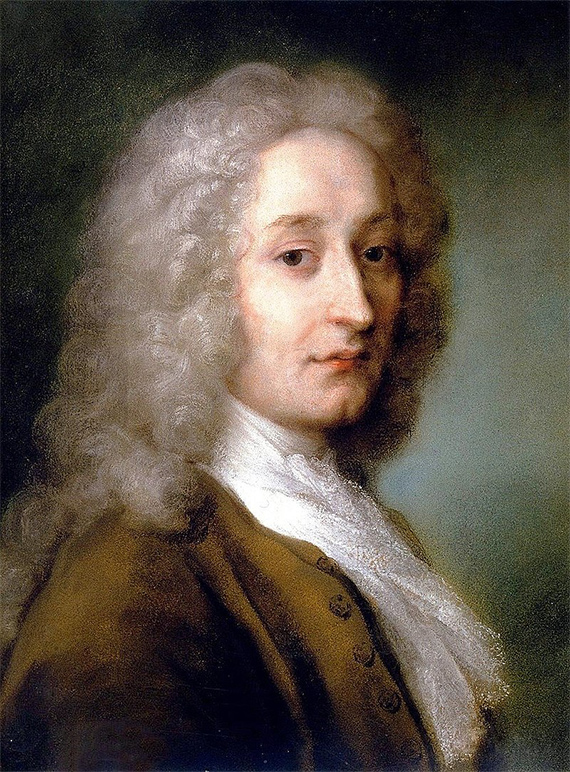
5. Jean-Antoine Watteau
Jean-Antoine Watteau (1684-1721) is considered the preeminent French painter of the 18th century, a key link between Baroque art and the Rococo style that followed. His work placed great emphasis on color and dynamism, and his compositions were strikingly reminiscent of theatrical scenes. However, it was the atmospheric nature of his work that profoundly influenced artists such as J.M.W. Turner and the Impressionists.
Watteau was born in Paris and began his artistic career as a pupil of Claude Audran. Over time, he developed his own style, which was characterized by soft and harmonious compositions teeming with airy light and vivid colors. His paintings often epitomized the aristocratic lifestyle and everyday life of French society of his time.
Although Watteau passed away at a young age, his influence on art was enduring. His work has left an indelible mark on the history of painting and was a precursor to later artistic movements. He represented a prolific link in the development of eighteenth-century art, and his skill in creating magnificent and atmospheric works remains an inspiration to artists and art lovers around the world.

6. Eugene Delacroix
Eugène Delacroix is one of the most important artists of the 19th century. He was one of the most prominent representatives of Romanticism, which is characterized by a preference for emotion over rationalism. With his expressive paint technique and mastery of color, he laid the foundation for subsequent avant-garde movements in the art of the XIX century and later.
Delacroix was born in Charleville, France, and showed his artistic talent at an early age. He studied in Paris, where he quickly became known for his passionate and sensual works that deviated from the classical style of his time. His works such as "Liberty Leads the People" and "Saracens" became symbols of Romanticism and anti-classicism.
The great artist Delacroix not only created masterpieces on canvas, but was also known for his literary works and remarkable essays on art. His contributions to art and art history remain inexpressibly important, and Delacroix's work inspires artists to explore the boundaries of expression and emotion in art. Eugène Delacroix remains the great master of Romanticism, whose works remain timeless and inspire new generations of artists.
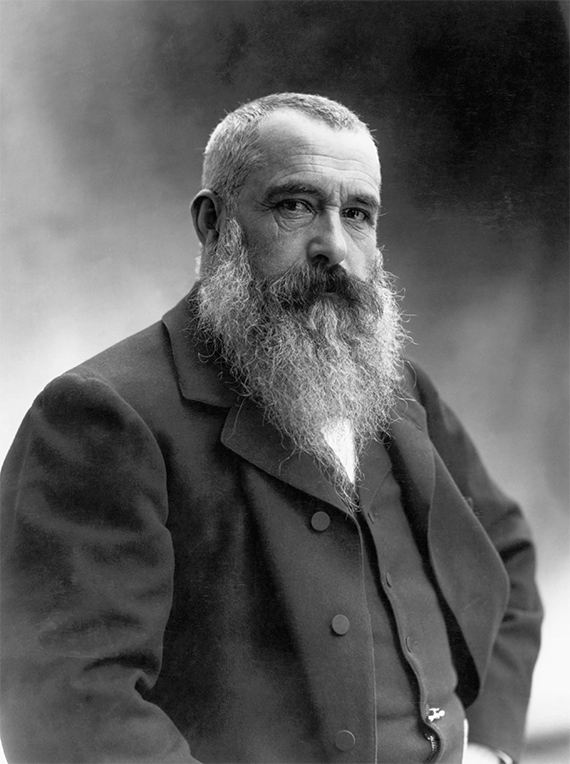
7. Claude Monet
Most famous among the Impressionists was Monet, who captured the changing effects of light on the landscape with prismatic fragments of color applied in quick strokes. In addition, his numerous studies of haystacks and other subjects foreshadowed the practice of serial work characteristic of Pop Art and Minimalism. At the same time, his magnificent paintings of lily ponds at the end of his career anticipated the development of Abstract Expressionism and color-field abstraction.
Oscar-Claude Monet, born in 1840 in Paris, France, was one of the greatest painters not only of Impressionism but of all of art history. His work was intertwined with themes of nature, light and color, and he felt a calling to capture moments of life with infinite beauty and fascination. His "Water Lilies" and "Hay" remain shining examples of his genius.
Monet was also one of the initiators of the Impressionist Exhibition in 1874, which eventually gave rise to this artistic movement. His explorations of light, color, and atmosphere inspired many artists and influenced many subsequent artistic movements. His work epitomizes the ideals of Impressionism and continues to inspire and delight art historians and art lovers around the world.
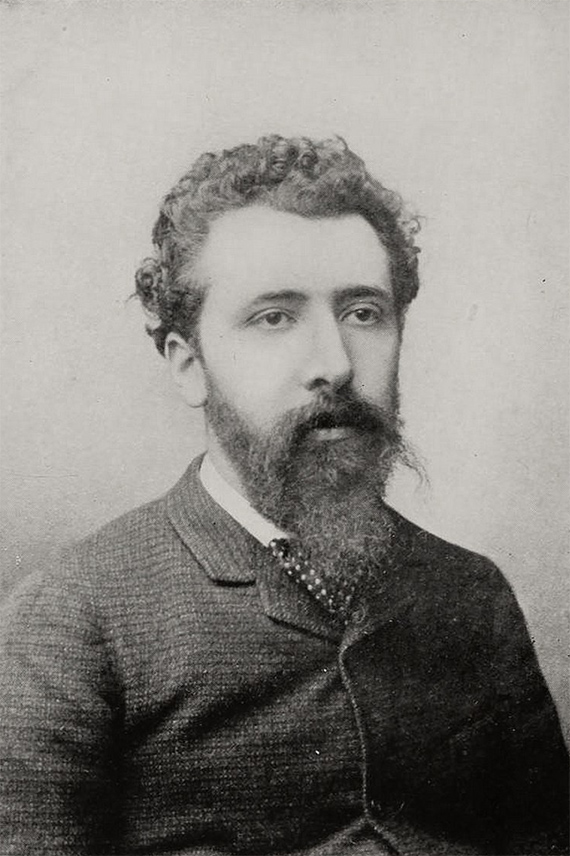
8. Georges Seurat
Georges Serat became known as the creator of pointillism, an innovative painting technique he developed with the artist Paul Signac. This radical technique involved applying small strokes of color to the canvas, and the viewer recreated the image by combining these dots and short lines. What set Serat apart from other Impressionists was his organization and composition, reminiscent of the stillness of classical art.
Georges Serat was born in Paris in 1859 and from the beginning of his career showed extraordinary artistic talent. He became one of the key figures of pointillism and created many works including "Bathers," "Sunday Afternoon at the Grande Jatte," and "Haymaking." His work delighted his contemporaries and became a model for new generations of artists.
Serat was also a member of a group of independent artists known as New Painting. He actively participated in organizing exhibitions and influenced the development of the art of his time. His work was appreciated both in France and abroad, and he left an indelible mark on the history of art as one of the creative and innovative masters of his time.
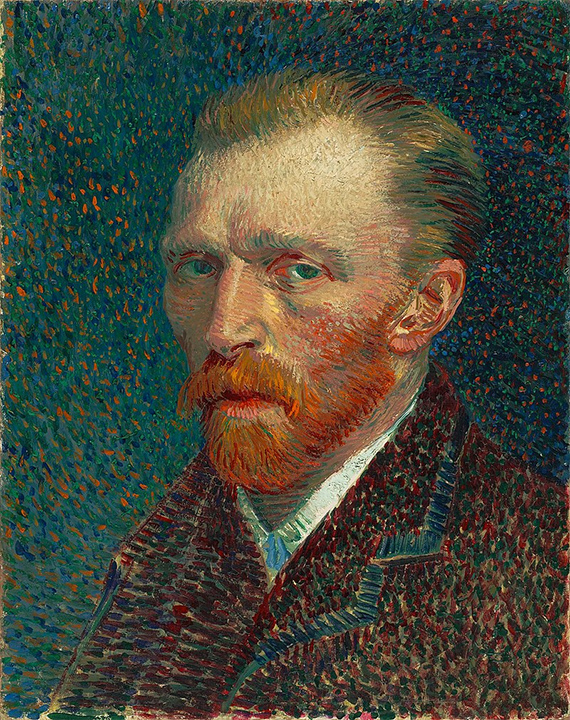
9. Vincent van Gogh
Van Gogh's mental instability is legendary, including the time he cut off part of his ear after a conflict with colleague Paul Gauguin. Despite this, his paintings remain some of the most famous and beloved works of art of all time. For example, his work Starry Night has inspired many artists and was also the inspiration for Don McClean's Top 40 hit. The technique Van Gogh used was to create dense strokes consisting of bright colors dispensed straight from a tube. This method inspired subsequent generations of artists.
Vincent Van Gogh, born in 1853 in Groot-Zundert, Netherlands, was an artist whose life and work were closely intertwined with myth and legend. His passion for painting was evident at an early age, and despite incredible hardships and dramas in his life, he became one of the greatest masters of the art. His vivid and intense paintings reflect his inner world and emotional intensity.
Van Gogh created more than 2,000 works in his short life, but recognition and success came to him after his death. His work is considered an important milestone in the development of art and a precursor to many artistic movements, including Expressionism and Abstractionism. His art, despite his tumultuous life, remains one of the most influential and beloved in the world, and his paintings continue to inspire and excite art fans for generations to come.

10. Edvard Munch
I scream, you scream, and we all experience anxiety together, as depicted in Edvard Munch's famous painting The Scream and the Mona Lisa. In 2012, a pastel version of this iconic work, reflecting contemporary anxious feelings, was sold at auction for the astronomical sum of 120 million dollars for those times. Munch's work is not limited to painting, his role in art is considered important, and he himself is considered a forerunner of expressionism. His influence is felt in the work of 20th century artists such as Egon Schiele, Erich Geckel and Max Beckmann.
Edvard Munch, born in 1863 in Loten, Norway, was an artist whose life and work were saturated with intense emotion and personal experience. He created works that embodied human fears, anxieties and inner conflicts. "The Scream", with its symbolism and expressiveness, became an icon of art, reflecting feelings that often go unspoken in everyday life.
Munch did not limit himself to "The Scream" alone. His collection of works included portraits, landscapes and other works that also reflected his unique style and view of the world. His work had a huge influence on 20th century art and became the foundation for the development of Expressionism and Modernism. Edvard Munch has left an invaluable contribution to world art, and his works continue to inspire artists and inspire viewers to think deeply.
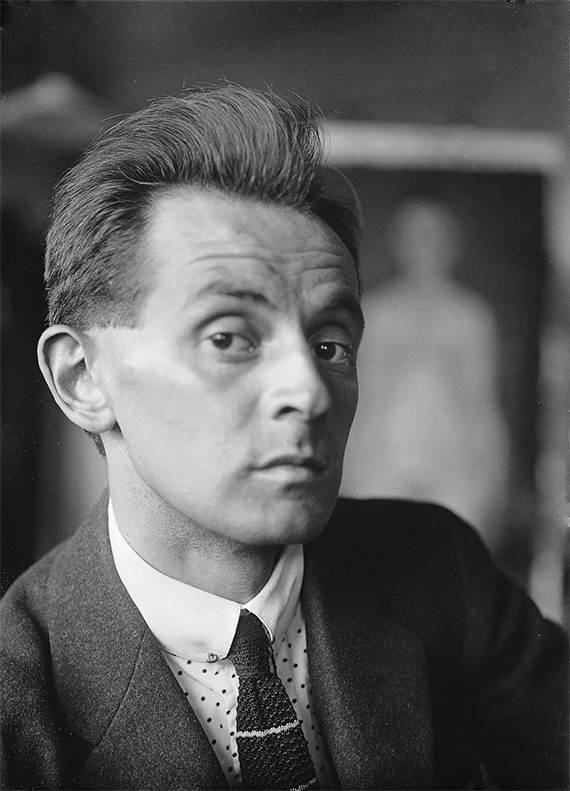
11. Egon Schiele
At the turn of the twentieth century, Vienna was a place where psychological and sexual tension and repression flourished, and no artist was able to convey this atmosphere as well as Egon Schiele. His feverish sensibility found expression in drawings and paintings characterized by frank and nervous subjects.
Egon Schiele, born in 1890 in Tuln, Austria, was one of the great masters of Expressionism. His work became a kind of symbol of the turbulent time and place in which he lived. Schiele is known for his bold and provocative works in which he explored themes of sexuality, death and human psychology.
The artist passed away at the age of only 28, killed along with his wife in a car accident. His short life was filled with intense creativity and daring experiments with form and color. Despite his early death, Egon Schiele left an invaluable legacy in the art world, his work continues to interest and inspire new generations of artists, and they serve as an example to those who seek art that can reflect deep human emotion and inner peace.
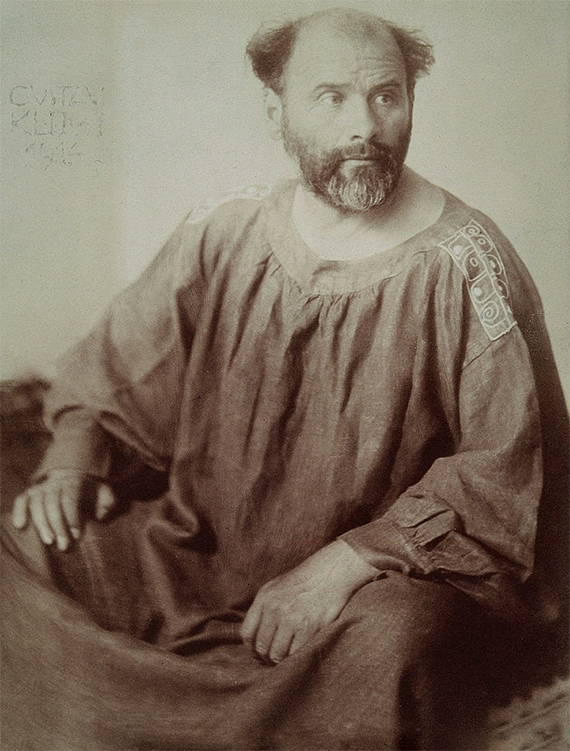
12. Gustav Klimt
The famous Viennese Symbolist painter of the late 19th century, Gustav Klimt became famous for his use of gold leaf, which was inspired by a visit to the famous Byzantine frescoes in Ravenna, Italy. The most famous work in which he used this technique is his masterpiece Portrait of Adele Bloch-Bauer I, also known as the Austrian Mona Lisa. The painting was stolen by the Nazis during World War II. The story of the return of this painting to its rightful owner was the basis of the movie "The Woman in Gold" starring Helen Mirren. Another iconic work by Klimt is "The Kiss".
Gustav Klimt, born in 1862 in Vienna, Austria-Hungary, was one of the great artists of his time and symbolism. His art, including portraits, murals and other works, was characterized by an exotic style that combined symbolism, eroticism and abstraction. This made his works recognizable and left a deep mark in the history of art.
Klimt was also one of the founders of the Vienna Secession, an art association that promoted modern art in Austria-Hungary. His influence is felt in various artistic movements, including modernism and surrealism. The attention to detail, symbolism and passion invested in his works make them timeless and relevant to art and culture.

13. Pablo Picasso
Pablo Picasso, born in Malaga, Spain, is one of the most famous artists. His name has become virtually synonymous with modern art, which, however, does not prevent him from adhering to the common stereotype of the reclusive genius whose ambition is matched by an appetite for the rich life. Picasso changed the course of art history with his revolutionary innovations, including collage and, of course, cubism, which undermined the dominant influence of the representational theme in art and set the tone for other twentieth-century artists. He transformed many artificial mediums and created so many works that it is sometimes difficult to realize the magnitude of his accomplishments.
Pablo Picasso, born in 1881, began his artistic career as a talented and promising artist, and his style went through several stages of development, from the blue and pink periods to abstract expressionism. He was known for his ability to express a wide range of human emotions and ideas in his works.
It is important to note that Picasso was not limited to painting. He also worked with sculpture, ceramics, prints, and even created batiks. His work influenced many artists of his time and subsequent generations, and his name remains a symbol of bold artificial experimentation. Pablo Picasso passed away in 1973, leaving a rich legacy that continues to inspire artists and art lovers around the world.

14. Henri Matisse
No artist was as close to the sensual pleasure of color as Henri Matisse. His work was imbued with graceful curves rooted in figurative art, and always focused on the tantalizing visual pleasure that pigment and hues bring. "I'm not a revolutionary on principle," he once said. "My dreams are an art of balance, purity and serenity, free of disturbing and depressing themes...... It is like a good chair, soothing and calming, pleasantly affecting the mind."
Henri Matisse, born in 1869 in Le Cateau-Cambresis, France, was one of the key artists of the twentieth century and a master of Fauvism. His work was characterized by vivid colors, frankness, and freedom from constraints, which made his work recognizable. He saw color as a means of expressing joy and sensuality, and his paintings and sculptures always remained full of life and energy.
Matisse was one of the founders of Fauvism, an artistic movement that promoted the idea of using bright and saturated colors in art. His influence is felt in the work of many artists and in a variety of styles, including abstractionism and pop art. His work reflects the joy and beauty found in the world, and it continues to inspire and delight viewers around the world.
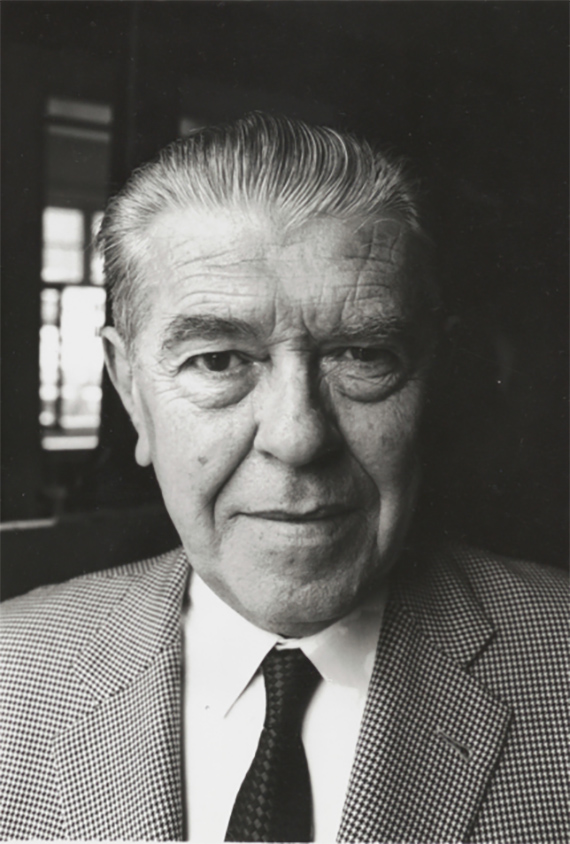
15. Rene Magritte
The name of René Magritte is widely known among art lovers and agnostics alike, and this is no accident: he radically changed our ideas about reality and fantasy. When someone talks about something "surrealist", in most cases the image of Magritte comes to mind.
René Magritte, born in 1898 in the small Belgian town of Jandek, was one of the great artists of Surrealism. His works stood out because he introduced elements of nonsense and mystery into them, making viewers question what they were seeing. He is known for his paintings depicting objects in unexpected contexts, as well as works that play with notions of time and space.
Magritte spent most of his life in Belgium, but his influence spread far beyond his native country. His work continues to inspire interest and wonder, and it remains an important component of the exploration of human imagination and perception. His work will forever remain emblematic of surrealism and art's ability to bring unexpected and even mysterious perspectives into our everyday lives.
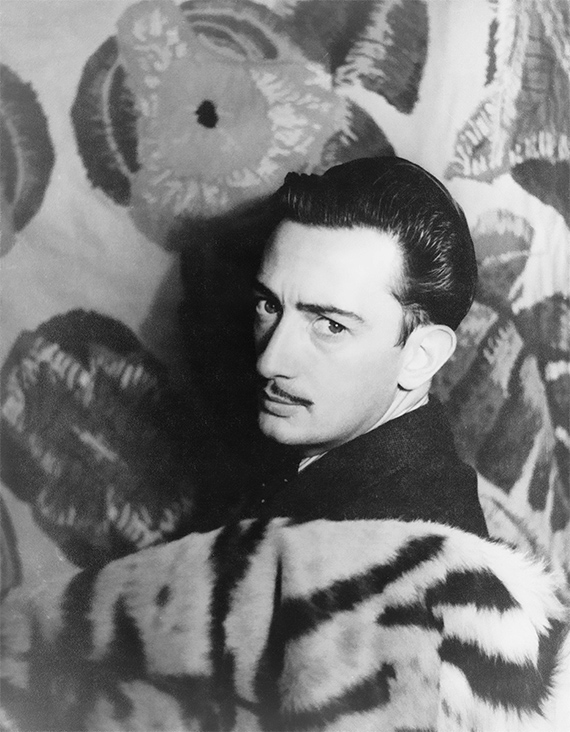
16. Salvador Dalí
Dalí was essentially "Warhol" even before Warhol himself came along. Like Andy, Dalí pursued fame almost as much as he pursued creativity. Dalí's paintings of smoothly melting clocks and bleak, sprawling landscapes epitomized surrealism, and he himself had a similarly eccentric appearance, his long whiskers resembling cat whiskers. As a consummate showman, Dali once declared, "I'm not weird. I'm just crazy."
Salvador Dalí, born in 1904 in Catalonia, Spain, was one of the most famous Surrealists and artists of the 20th century. His work reflected his fertile imagination and his desire to create a world in which reality and fantasy intertwined in a masterful play with perception. He was heavily influenced by Picasso and early Surrealism, but developed his own unique style, which became characterized by mystical and surrealist imagery.
Dalí was also known for his eccentric images and behavior. His eccentricities, including his famous mustache and public appearances in unusual costumes, made him an integral part of the art scene of his time. His work remains an important component of the study of the influence of the subconscious and dreams on art, and his name is forever associated with surrealism and creativity that provokes questions and admiration.

17. Georgia O’Keeffe
Georgia O'Keeffe's reputation, in particular, stems from the fact that many of her works are associated with certain anatomical forms of the female body. Although O'Keeffe herself has strenuously rejected the idea that her compositions, especially her floral compositions, have a symbolic relationship to the vagina, this interpretation has taken hold. However, there is much that is innovative in her artistic legacy, which combines symbolism, precisionalism and abstraction.
Georgia O'Keeffe was born in 1887 in Wisconsin, USA. She became one of the most influential and recognizable artists of American modernist painting. Her works, including her famous abstract paintings of flowers and anatomical forms, reflect her passion for exploring form and color.
O'Keeffe was a pioneer in the art of abstraction and expressionism, and her work had a profound influence on the development of American painting and art in general. Her works are considered symbols of female strength and independence, and she herself was an important symbol of female artistic autonomy. Georgia O'Keeffe passed away in 1986, but her legacy continues to inspire art historians and artists around the world, and her work remains important symbols of contemporary art.
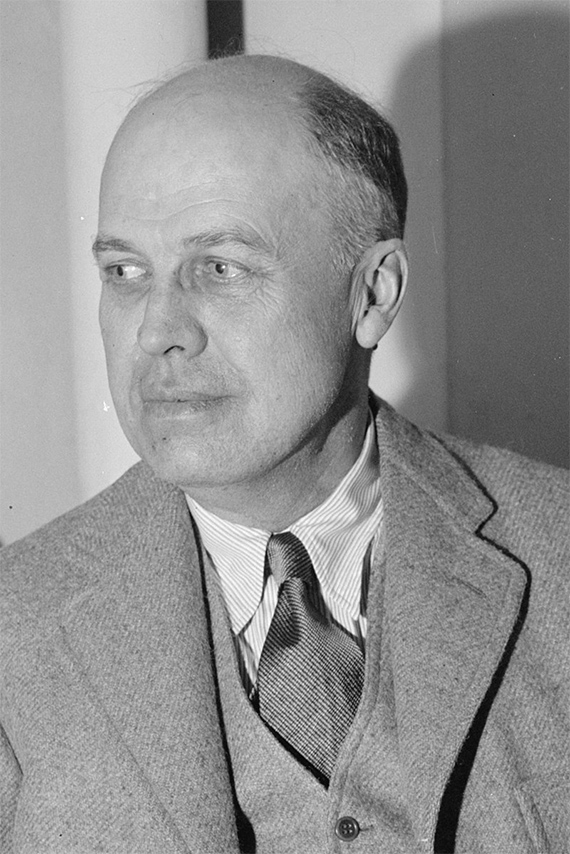
18. Edward Hopper
Ed Hopper's enigmatic paintings plumb the depths of the American experience, exploring themes of alienation and loneliness that represent the shadow side of the religious worship of individualism and the pursuit of often elusive happiness. In works such as "Night Hawks," "Automaton," and "Small Town Office," the artist captures a stillness imbued with despair and his characters trapped between desire and reality. His landscapes carry a sense that the vast expanse of America can be both cleansing and exhilarating.
Edward Hopper, born in 1882 in New York City, was one of the great artists of twentieth-century American painting. His work, characterized by minimalism and melancholy, had a profound impact on the art community and became a symbol of the American scene. Hopper had a unique ability to convey emotion and atmosphere in his paintings, which made his works unforgettable.
Ed Hopper's art continues to inspire and pique the interest of artists and audiences alike. His work remains relevant and enigmatic, leaving room for reflection on the nature of human existence and the American soul.
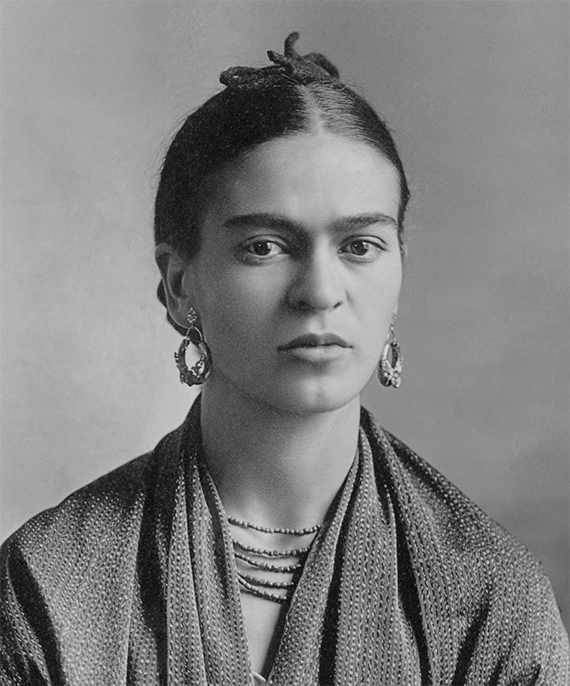
19. Frida Kahlo
Mexican artist Frida Kahlo, as well as a symbol of feminism, was a renowned performance artist who used paint to express her vulnerability and created an image of herself as the embodiment of Mexico's cultural heritage. Among the artist's best known works are numerous surreal self-portraits in which she maintains a regal pose despite portraying herself as a martyr going through personal and physical suffering. These sufferings are rooted in the artist's unhappy life: polio as a child, severe trauma as a teenager, and a tumultuous marriage to fellow artist Diego Rivera.
Frida Kahlo was born in 1907 in Coyoacan, Mexico, and her work has come to symbolize strength and perseverance in overcoming life's challenges. Her work reflects the richness of Mexican culture as well as her own internal struggles. In addition to being a great artist, Kahlo was a strong supporter of women's rights and social justice.
Frida Kahlo left an indelible mark on the history of art and became an icon of world painting. Her work continues to inspire and excite people, and her biography serves as an example of resilience and courage in art and life.

20. Jackson Pollock
Jackson Pollock, who coped with alcoholism, insecurity, and the clumsiness of a conventional artist, overcame his limitations during a brief but vibrant period between 1947 and 1950, when he created the drip abstractions that cemented his fame. Abandoning his easel to lay his canvases on the floor, he used house paint straight from the can, tossing and dripping thin skeins of pigment that left behind a concrete record of his movements-a technique that later became known as action painting. This period of work brought Pollock worldwide fame and is considered one of the key moments in the history of abstract art.
Pollock's drip paintings, created in alcoholic ecstasy and emotional tension, became his signature style and the symbol of Expressionism in art. They reflected his personal struggles, but also became a manifestation of freedom and self-expression through art. Pollock passed away in 1956, but his legacy and influence on the art world remain forever.

21. Andy Warhol
Technically speaking, Warhol was not the creator of Pop Art, but he became a kind of "founding father" of this style, taking it from art to the world of fashion and celebrity. Beginning his career as a commercial artist, he transferred the ethics of advertising into the realm of fine art, even suggesting that "Making money is art." This distinguished him from the existential aspirations of Abstract Expressionism. Although his work is known for Campbell's soup, Marilyn Monroe and Elvis Presley, his most grandiose work was himself.
Warhol was a pop culture icon, the epitome of his time. His factory, The Factory, was a place where celebrities and artists merged into one motley mass. He viewed the world around him through the lens of popular culture and media, and his work reflects this view. He believed that anyone could be a celebrity for fifteen minutes, an idea he actively promoted in his art.
Warhol himself, with his charisma and eccentric appearance, became a character that epitomized the spirit of freedom and self-expression of the 60s. His influence on modern art and pop culture cannot be overemphasized, and his work remains relevant and inspiring to many artists and creatives around the world.

22. Yayoi Kusama
Yayoi Kusama is one of the most famous contemporary artists. Her immense popularity is largely due to her famous "Infinity Rooms" that proved irresistible to Instagram users, but her artistic journey spans more than six decades.
Since childhood, the Japanese artist suffered from hallucinations manifesting as flashes of light, auras and fields of dots and colors that "spoke" to her. These experiences served as inspiration for her art, including the aforementioned rooms, as well as paintings, sculptures, and installations that radiate bright and fantastical patterns of dots and other motifs.
From 1957-1972, she lived in New York City, where she became known for her chairs upholstered with soft phalluses and street actions involving public nudity. Nevertheless, her struggle with psychological problems continued unabated, and in 1977 she was hospitalized in a psychiatric hospital in Japan, where she remains to this day.
Kusama's inner world, populated by dots and repetitive motifs, became a key element of her art. This, combined with her eccentric style and creative authenticity, has attracted the attention and inspired many artists and art lovers around the world. Despite years of hardship, she continues to work and create, remaining a significant figure in the art world.
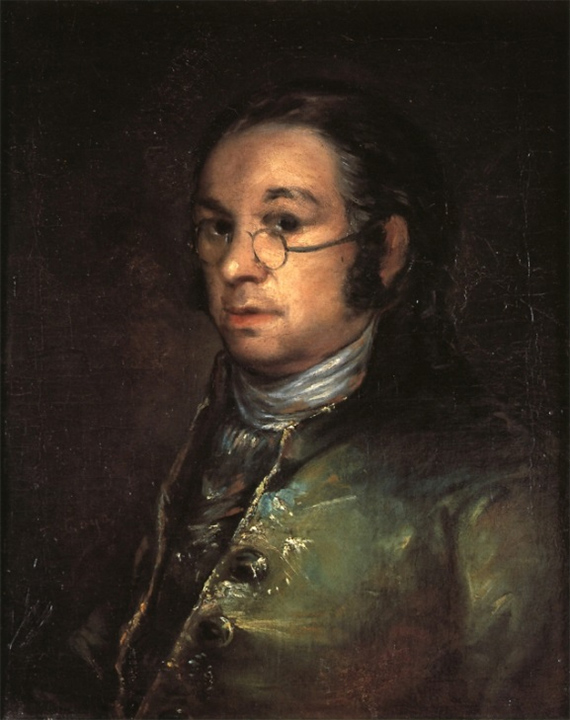
23. Francisco Goya
Francisco Goya was a famous Spanish painter whose work had a significant impact on the development of art. He became famous for his pictorial works, including portraits of kings and aristocracy, the mores of his time, and series of prints such as Horrors of War and Frivolities. Goya was a master of Romanticism and a precursor to Modernism, and his works often epitomize the passions, tragedies, and social aspects of the era in which he lived.
Early in his career, Goya worked at the royal court, which helped him create many portraits of prominent figures of his time. He was also the court painter of King Charles IV and left beautiful works depicting the monarchs and their entourage. But as time went on, his works became more profound and reflected complex aspects of society and human nature.
"Horrors of War" is one of a series of etchings created by Goya during Napoleon's wars with Spain. In it, he depicted the horrors and suffering of war in a terrifyingly realistic way, criticizing the brutality and illiteracy of the conflict. "Frivolities" is a collection of satirical prints where Goya mocked the social and moral shortcomings of his time.
Goya's "Black Painting," created in his later years, is particularly famous. These works, including the famous "Saturn Devouring His Son," reflect his personal fears, dark thoughts, and struggle with severe physical and mental problems. In them, he embodies horror and hopelessness, exploring themes of death and decay. These paintings are considered outstanding works of art, and they continue to inspire and shock viewers with their power and depth to this day.
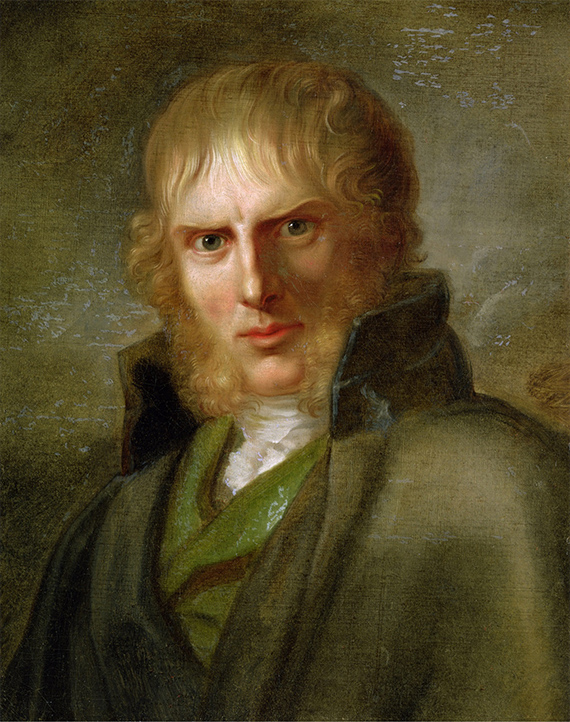
24. Caspar David Friedrich
Caspar David Friedrich, a German painter of the Romantic era, became famous for his dark and mysterious landscapes, which have come to symbolize Romantic aesthetics and deep emotions. His works often exude an air of mystery and inner contemplative peace. However, his biography and artistic path were filled with their own dramas and vicissitudes.
Born in Greifswald in 1774, Friedrich began his artistic career as an apprentice at the Greifswald Academy of Art. He then moved to Copenhagen, where he studied painting and received an education in fine arts. Upon his return to Germany, he began to create his famous landscapes inspired by the nature of Northern Germany, including seas, forests and mountains. His work is characterized by a meticulous attention to detail and a mastery of light and shadow.
Friedrich is also known for his ability to incorporate deep symbolic elements into his paintings. For example, his painting "Monk by the Sea" includes a lone monk standing in front of the immense sea and symbolizes the tiny size of man in front of the infinity of nature. These symbolic aspects make his works not only picturesque, but also spiritual and philosophical.
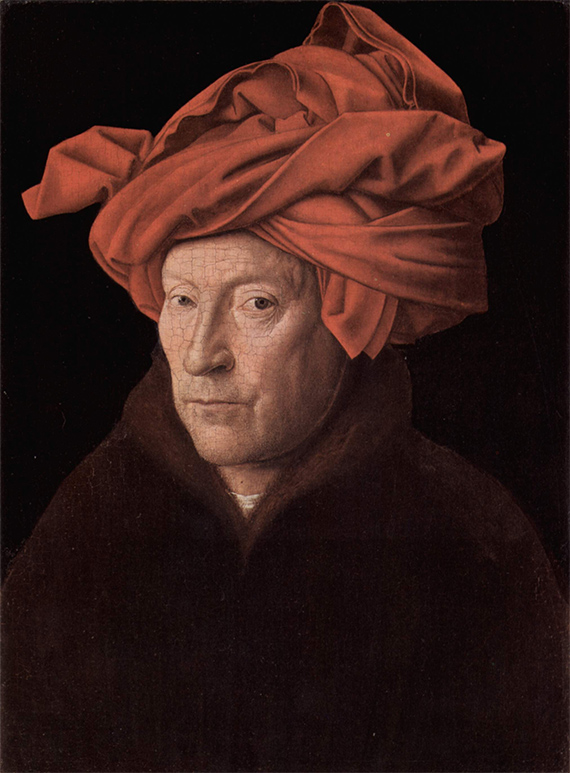
25. Jan van Eyck
Jan van Eyck's work shed light on early Netherlandish art and became a model of skill and detail for future generations of artists. The artist was born in Bruges, Belgium, in the first half of the 15th century and worked throughout his life in various cities in the Netherlands. His work was actively supported by the Burgundian aristocracy and the church, which enabled him to produce works of the highest quality and raise the standards of painting.
One of the most important technical innovations associated with the name of Jan van Eyck is the development and application of oil colors in painting. This technique enabled the artist to achieve incredible detail and depth in his works. He also mastered the play of light and reflections, which gave his works a special vividness and realism.
"Arnolfini Wedding" remains one of the most famous and significant works of Jan van Eyck. This canvas impresses with its detail and attention to the smallest elements, be it textiles, furnishings or even wood grains. The painting is a kind of frozen moment in the life of the Burgundian aristocracy of the XV century and a magnificent example of painting of that era.
Jan van Eyck is considered one of the founders and pioneers of Flemish painting, and his contribution to art has left an indelible mark, influencing artists and art historians for centuries.
No Comments Yet...